Follow these easy directions to make your own coconut oil soap and stain stick for washing laundry, stain removal and simple household cleaning.
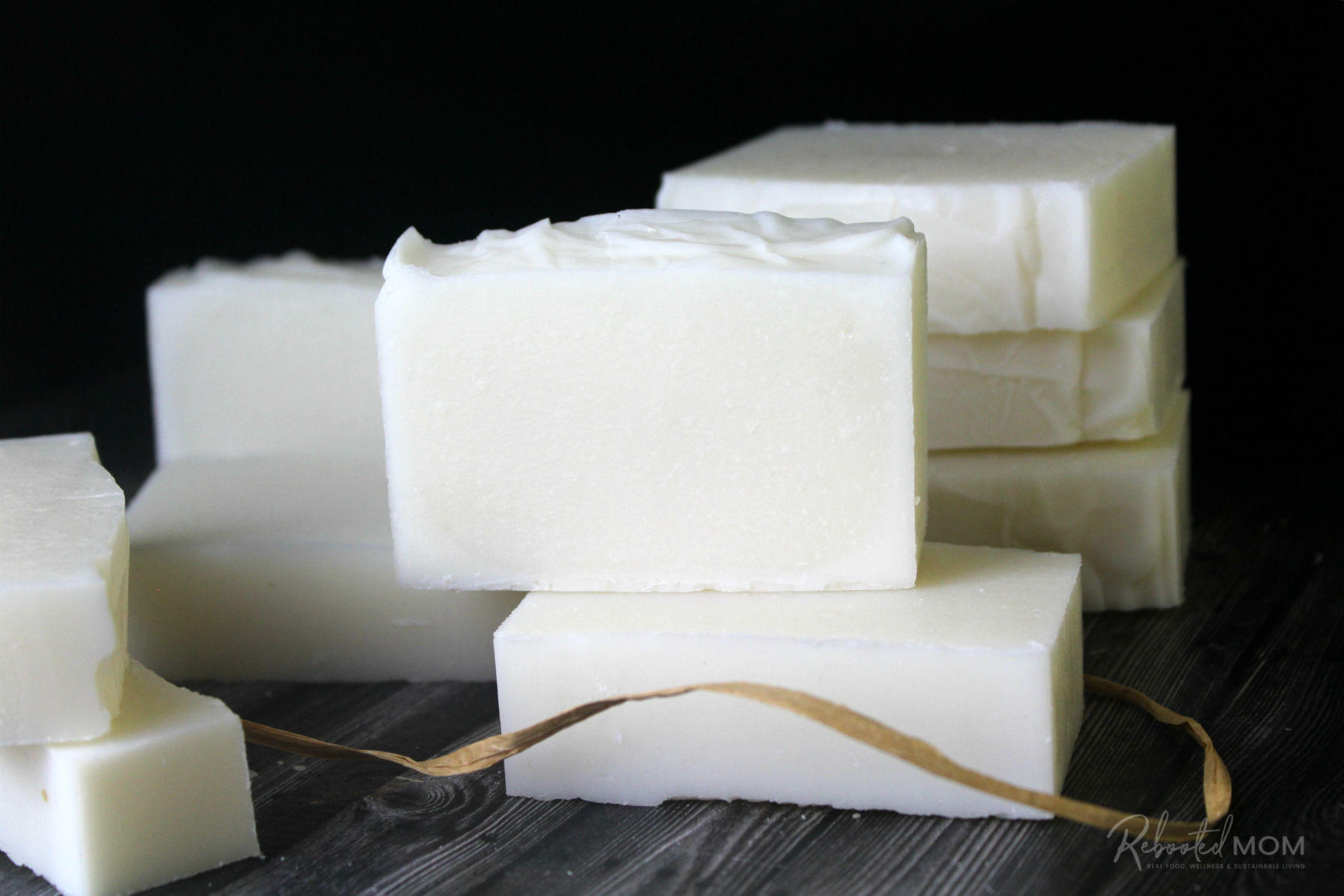
Over the last few years, laundry soap has been something of trial and error. Powder and liquid, I’ve tried them all. Some I have loved, others not so much. I find a lot of satisfaction in making my own and modifying what works (and what doesn’t) to find something that really works for my kids and I.
This 100% coconut oil laundry soap is made at 0% superfat. With no extra oils or butters to moisturize, it’s strictly a soap for laundry purposes only. (You wouldn’t want extra oils and fats on your clothes!)
is a cold process soap recipe used for laundry purposes only. Unlike other cold process soap recipes I’ve done in the past, this one is made entirely with coconut oil. It’s best suited for cleaning dirty clothes.
Once you have this soap, you can transform it into laundry detergent (powder) or laundry butter – more to follow on that this week!
While our family prefers to keep this soap unscented, you can actually add your choice of essential oils – maybe rosemary, lavender, lemongrass + lime, or even tea tree.
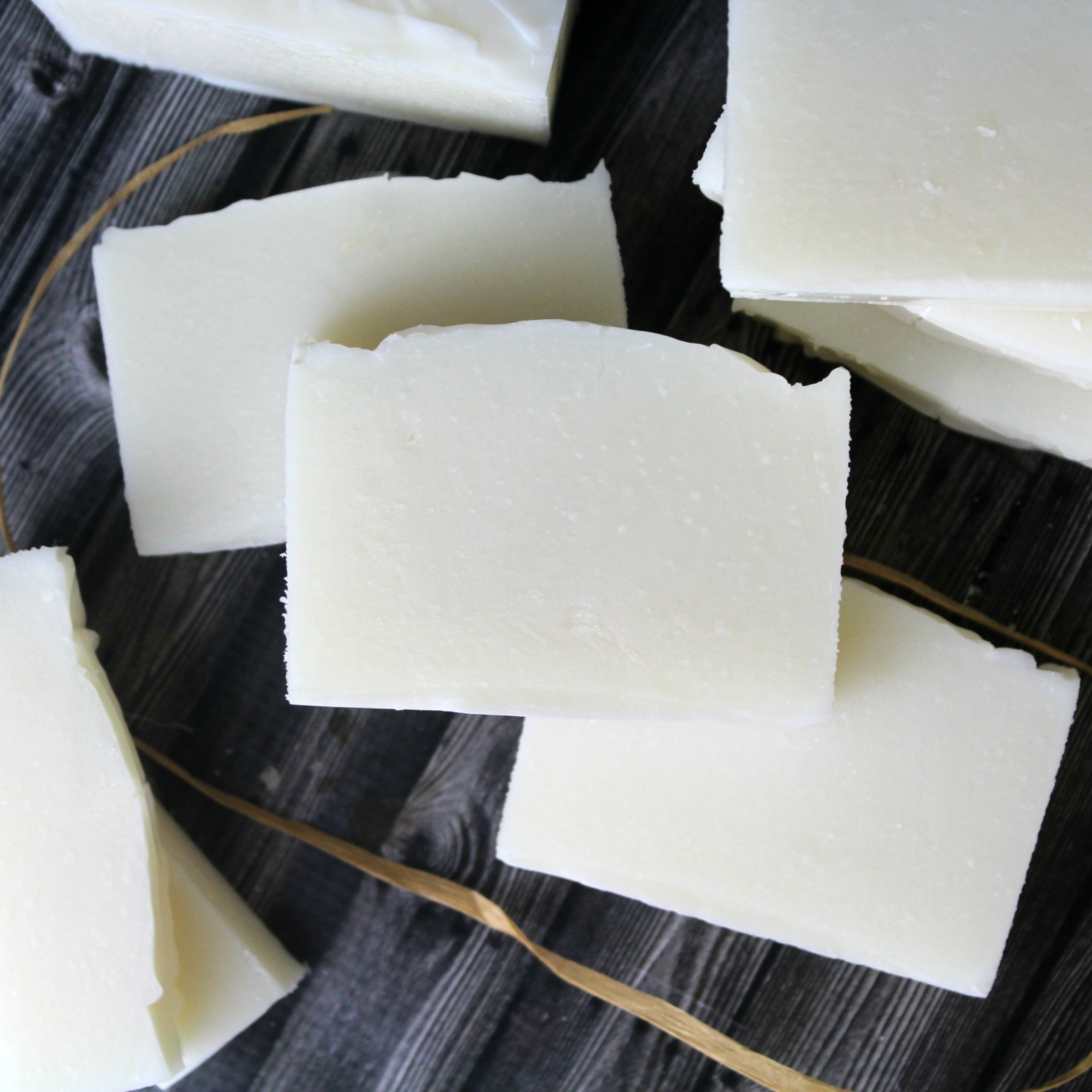
DIY Coconut Laundry Soap
This recipe below will make 8 bars of laundry soap at 0% superfat. Cut the laundry soap in half even further to make 16 stain sticks.
- 11 oz distilled water
- 5.52 oz sodium hydroxide (lye)
- 30 oz coconut oil
- optional: 18 grams essential oil of choice
Other materials needed:
Coconut oil is very inexpensive when purchased in bulk. But if you aren’t able to do that (or don’t have a soap supply store in your area), then Costco or Amazon have great options too.
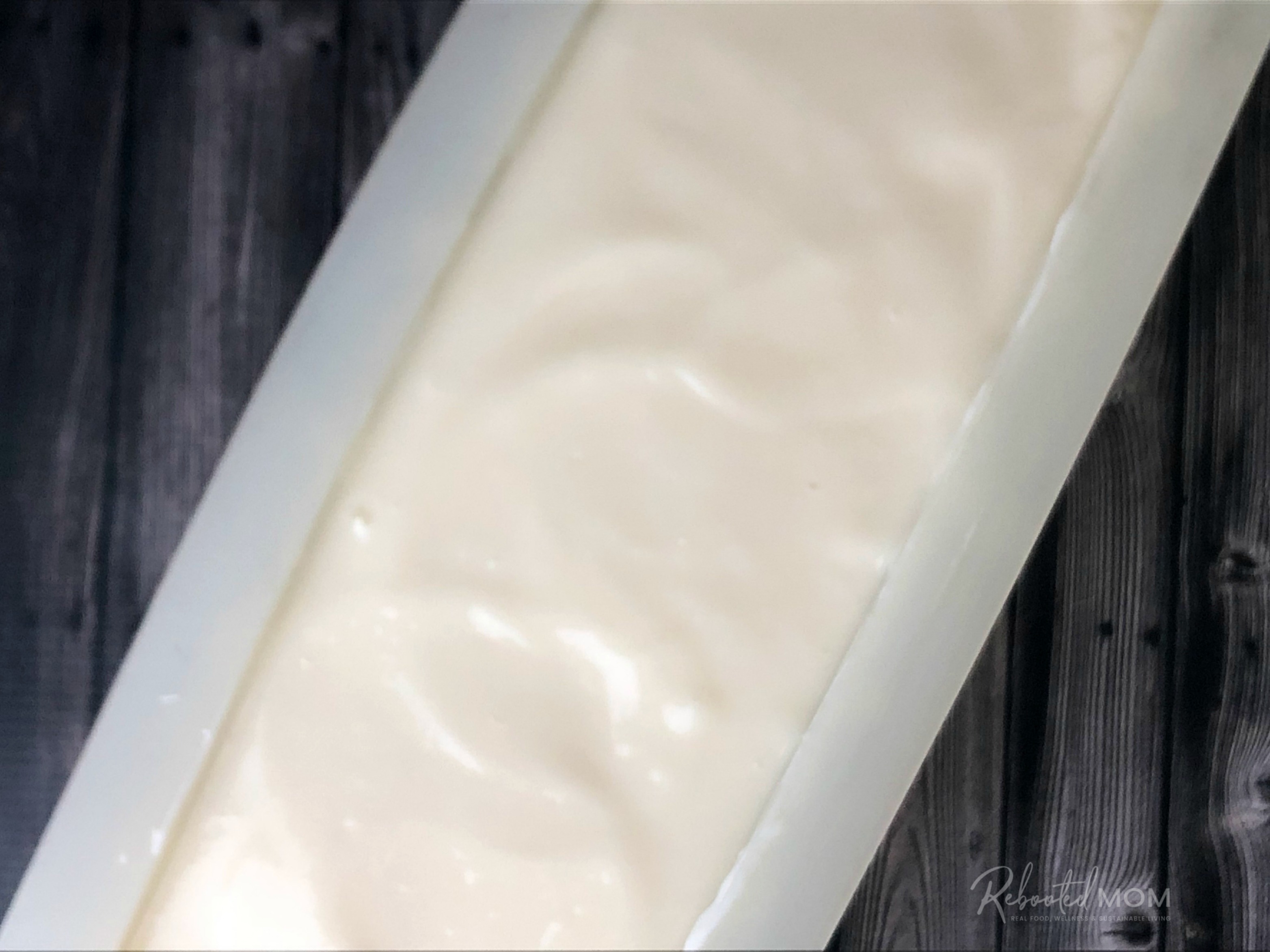
Directions — Coconut Laundry Soap
**Note: if you haven’t made cold process soap in the past, please reference this article on making cold process soap. Though it’s not exactly the same recipe, many of the same safety precautions pertain.
- Follow all safety measures – put on goggles and make sure you have gloves on. Lye is caustic to work with so you always want to be prepared.
- Carefully weigh out your distilled water in a heatproof dish or container. Likewise, weigh out your lye in a separate dish.
- Pour your lye into the water and stir well until it is completely dissolved. (Do this in the sink and crack open the window behind you to avoid breathing in the fumes).
- Push the mixture to the rear of the counter (far away from the reach of kids) to cool for 45 minutes. Target temperature is 100-110 degrees F.)
- As the lye cools, weigh out the coconut oil and heat to 90 degrees F.
- Once the lye is cool, pour the lye solution into the coconut oil (use your sink for this). Add your essential oil (optional).
- Blend with the immersion blender on the lowest setting. Pulse the blender, avoid running the motor continually or it will overheat.
- Use the immersion blender, blending little by little until the mixture starts to thicken – it’ll be ready to pour when it’s like a very thick pudding.
- Pour the soap into your loaf mold and push to the rear of the counter.
- The soap should be ready to remove from the mold in 2-3 hours. Using gloves, remove it from the mold and place on waxed paper.
- Cut the log into bars*
**Unlike regular cold process soap that requires 24+ hours in the mold, this coconut oil laundry soap will harden up rather fast. Remove it from the mold and cut it just a few hours after it is poured, otherwise it’ll be too hard to slice.
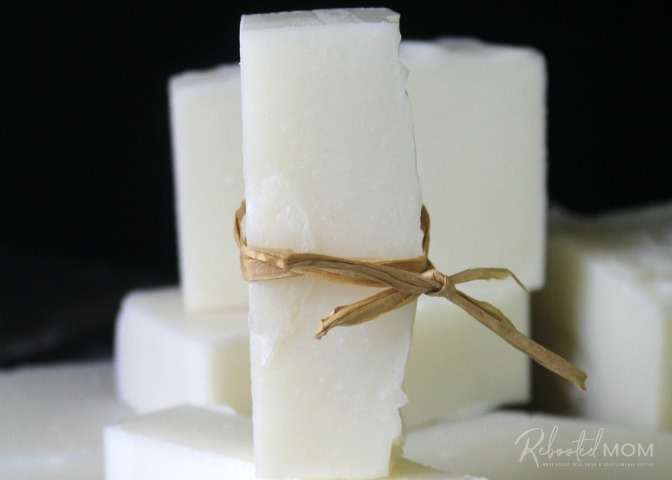
DIY Stain Stick
Once you slice your bars, cut them in half another time for laundry sticks. Allow them 2 weeks to fully cure before using.
A laundry stain stick is easy to use. Simply rub on clothing with a little water to capture the stain. If you are unsure, test the stick in an inconspicuous place before using on delicate fabrics.
Making your own Laundry Soap Powder
Go a step further – this recipe for laundry soap bars can now be grated into a fine powder using a hand grater or a food processor.
If you are using a food processor to whizz down the soap, start by slicing the bars into small pieces so as not to damage your food processor. They’ll whizz down into powder much faster.
Once you have powder, you can now make your own DIY Laundry Soap Powder.
DIY Laundry Soap Powder
This recipe below will make just under 3 C. of laundry powder.
- 2 laundry soap bars (above) grated down
- 2 C. arm and hammer washing soda*
- optional: essential oil of choice
*Don’t confuse with baking soda. Washing soda is Sodium Carbonate – find it at your local Walmart in the laundry aisle, on Amazon or, you can check your local pool supply for Sodium Carbonate (pure soda ash) as well.
Combine both ingredients and mix well. Store in a glass jar out of reach of small children. Use 2 Tbsp per regular load or slightly more for a larger load.
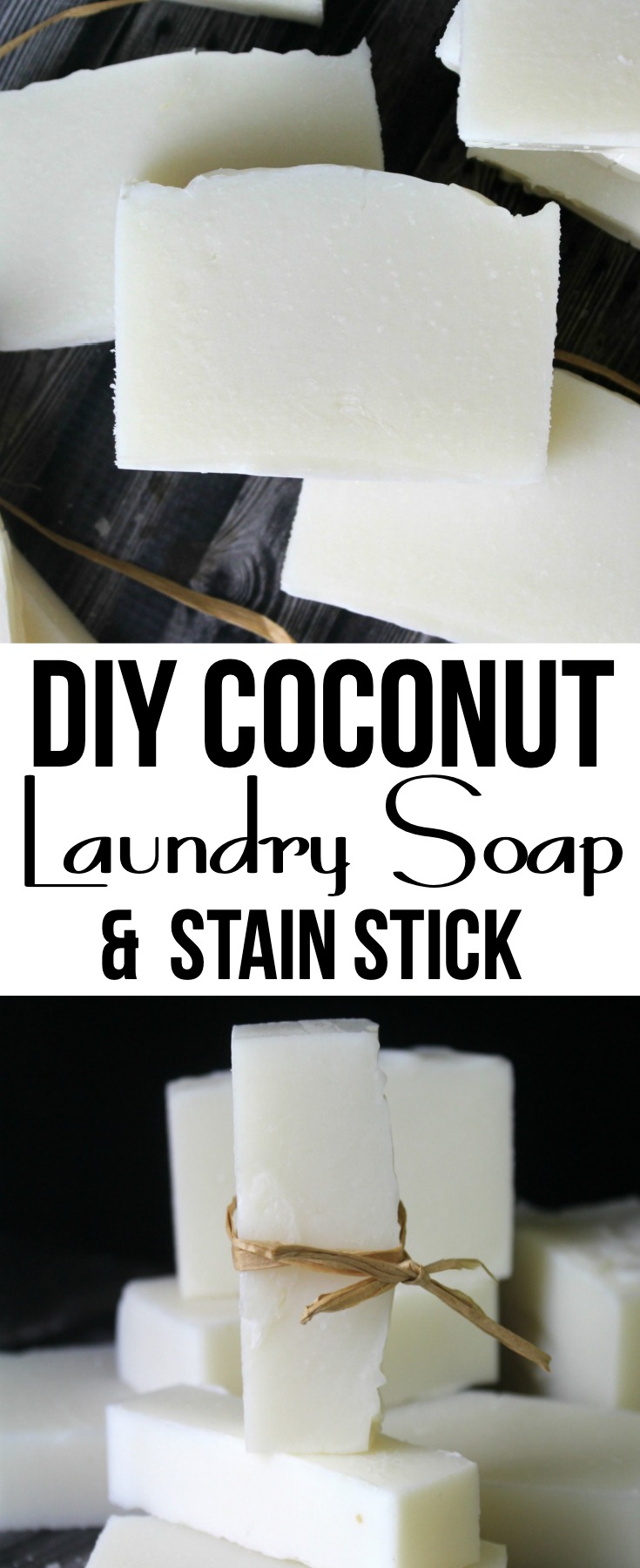
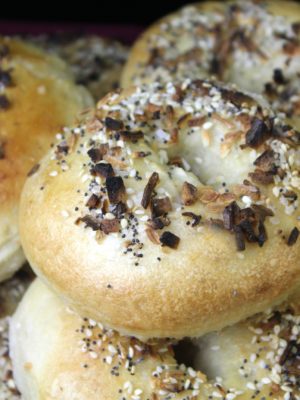
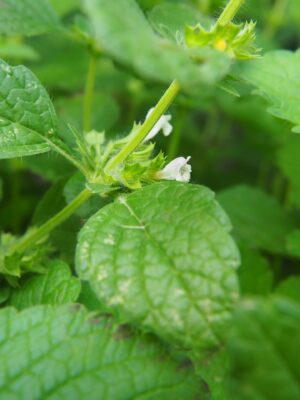
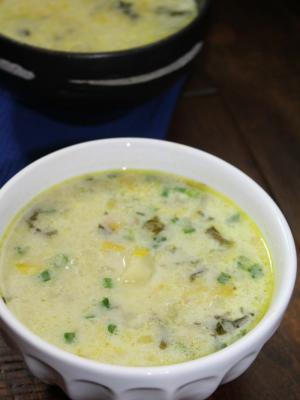
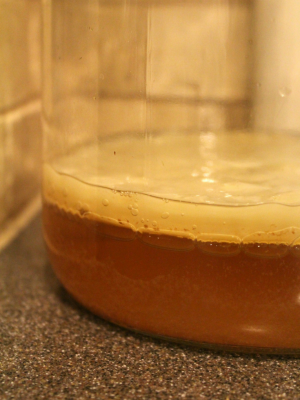
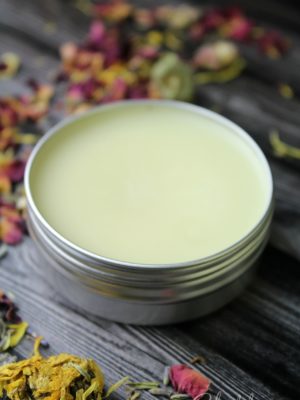
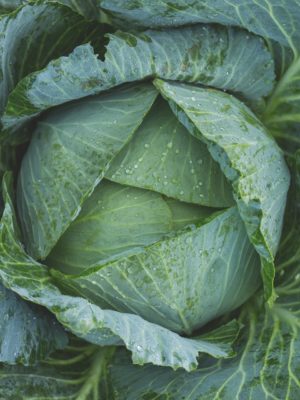

Hola, al tener lejia, sólo es válida para ropa blanca, no?
Gracias
La lejía es lo que convierte el aceite de coco en jabón. Cuando El jabón se esta curando, esto le da tiempo a que la reacción química convierta toda la lejía y aceite en jabón. Por lo tanto, cuando el proceso termina, ya no tiene lejía. El jabón se puede utilizar en ropa de color. Ahora bién. como el método de fijación de colores a diferentes textiles varía, se recomienda que pruebes el jabón en un ligar que no se note primero para comprobar que el color no se corra.
can this be used to clean cloth diapers?
It sure can… I also used cloth and we just finished using cloth this past week. It works great on them. I also dried mine in the sun, which helped too.
Do you have to grated the bars or can you put chunks of it i the washer?
Yes, you need to grate the bar. I use the food processor to grate. If you use the bar to make laundry soap, you can melt down on the stove top in water and turn it into laundry butter. I have a tutorial for that on the blog too. It’s what I use for detergent!
Does this need any preservative? Or could you suggest a preservative & how much for those who fear rancid products. I’m a young widow & will not be using up my supply that fast now that it’s just myself & my 15 yr old living here. I’m also trying to start a business & want to consider adding laundry stain sticks to my line. I used to make a liquid stain remover via a random concoction when my husband was alive. I would grate up both the off white & pink soap (Fels Naptha Soap? & the other name I’m blank), washing soda, small amounts of both dawn dish liquid & 90% isopropyl alcohol, and the majority being distilled water. Sometimes with stubborn stains I’d add hydrogen peroxide & wow that cut thru the worst stains so easy it seemed. I would use it up so fast that a preservative wasn’t necessary. Sometimes I would use it straight as laundry detergent when I was in a hurry or had larger amounts of stained yard / garage work clothes vs soaking & scrubing. Seems odd how I used to grumble at my household of boys for constantly getting their good clothes fill of stains & now grief stricken that I’d give anything to go back to my former life when I had the full household of boys & a spouse. Covid wiped out my husband’s family like wildfire then heart disease took out many more so close to me recently. Hopefully we will never re-live 2021 again in our lifetime. I couldn’t handle another loss – at least not for a long long time.
God Bless You – great posts.
Hi Jodie, it doesn’t need a preservative 🙂 Stain sticks are a great business venture.. I had them in my Etsy shop for a short time, and I still make them. But I scaled back the number of items in my shop and kept what sold well and held back what didn’t. COVID was rough on all of us, I am so sorry you suffered a loss. You are definitely a strong woman – I have a 15 year old as well (and a few others) and wouldn’t trade being a mom for the world. It is by far the most rewarding part of my life.